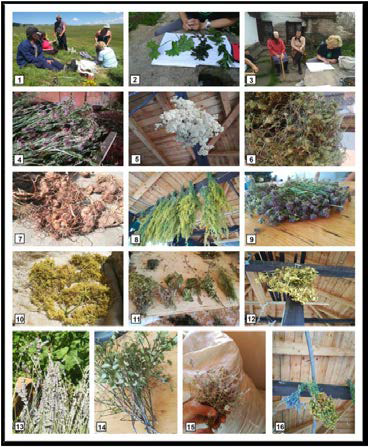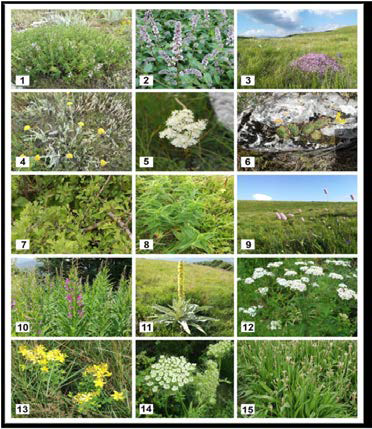Institution/Author: Public Enterprise Srbijasume/Dejan Miletić
The flora of the Stara Planina mountain includes about 1,200 taxa, which is about 34% of the total flora of Serbia, among which there are 115 endemic species (some of which are classified in the category of critically endangered), 52 forest, shrub and herbaceous plant species. Stara Planina abounds in medicinal plants many of which are protected by the Law. The tradition of the use of medicinal herbs for various purposes in the area of Stara Planina is very long and rich, and represents a significant cultural-historical heritage. A large number of plants are used in fresh, and especially in dry condition, in many households in the local health care. The role and importance of medicinal herbs in a region is best illustrated by the diversity of its use. Medicinal plants are also very important natural resource of each country, and should be used wisely and rationally. This implies ensuring the development of rural areas with the conservation and preservation of biodiversity, the preservation of traditional cultures, as well as the helping science in finding new raw materials.
However, over-harvesting and destruction of habitats due to anthropogenic pressure threatened the survival of some species, for example, Adonis vernalis L., Arctostaphylos uva-ursi L. and Gentiana lutea L. which are listed on the EU wild fauna and flora protection (Habitat Directive) and wildlife trade regulations. In the last few years, in the rural areas of Serbia, such as the region of Stara Planina, trends of permanent depopulation have been observed which could cause a partial loss of traditional knowledge. The ethnobotanical heritage of Stara Planina should be promoted in the broadest sense, and this would be reflected in the special protection of certain localities and the economic progress of this region, which is in line with its biological, ethnic and cultural diversity. In this regard, Public Enterprise “Srbijašume” as the manager of the “Stara Planina” Nature Park, carried out a project entitled “Ethnobotanical research on diversity and use of medicinal plants on Stara Planina”. The value of the Project amounted to RSD 1,597,733, and the project was co-financed by the Ministry of Environment in the amount of RSD 500,000 (1 USD approx. 105 RSD).
The research aimed at contributing to the preservation of the diversity of medicinal herbs of the Stara Planina and promoting traditional ethnobotanical and ethnic medicine knowledge of the researched area of JP “Srbijašume”, and was carried out in cooperation with the Institute for Biological Research “Siniša Stanković” from Belgrade.
The goal of the project was to research the medicinal herbs of Stara Planina and their medicinal properties with the aspect used in traditional and alternative medicine by local population and people. Also, implementation of the project included: determining diversity and quantitative representation of medicinal plants in the area of Stara Planina; assessing the degree of vulnerability of medicinal flora diversity and proposing appropriate protection measures, taking into account quantitative representation of certain species; analysis of the use of medicinal herbs in phytotheraphy; proposing the method and time of harvesting/collecting (in accordance with the phenophase) of medicinal herbs or their parts, with the maximum preservation of their number, diversity and habitat; assessment of the potential for sustainable development of natural resources of medicinal herbs in the Stara Planina region, as well as examination and suggestion of the possibility of cultivating important plant species, either from the aspect of demand (which reduces the pressure of natural populations), either from the aspect of nature protection.


Harvesting (left); identification of plants in the field, interviewing the local population, methods of preparing the medicinal herbs for use and some of medical plants at Stara planina: 1) Satureja montana L. 2) Mentha piperita L. 3) Thymus serpyllum L. 4) Achillea clypeolata Sm. 5) Filipendula ulmaria L. 6) Sempervivum tectorum 7) Crataegus monogyna Jacq. 8) Gentiana asclepiadea L. 9) Persicaria bistorta (L.) Samp. 10) Chamaenerion angustifolium (L.) Scop. 11) Verbascum phlomoides L. 12) Achillea millefolium L. 13) Hypericum perforatum L. 14) Angelica archangelica L. 15) Plantago lanceolata L. (right)